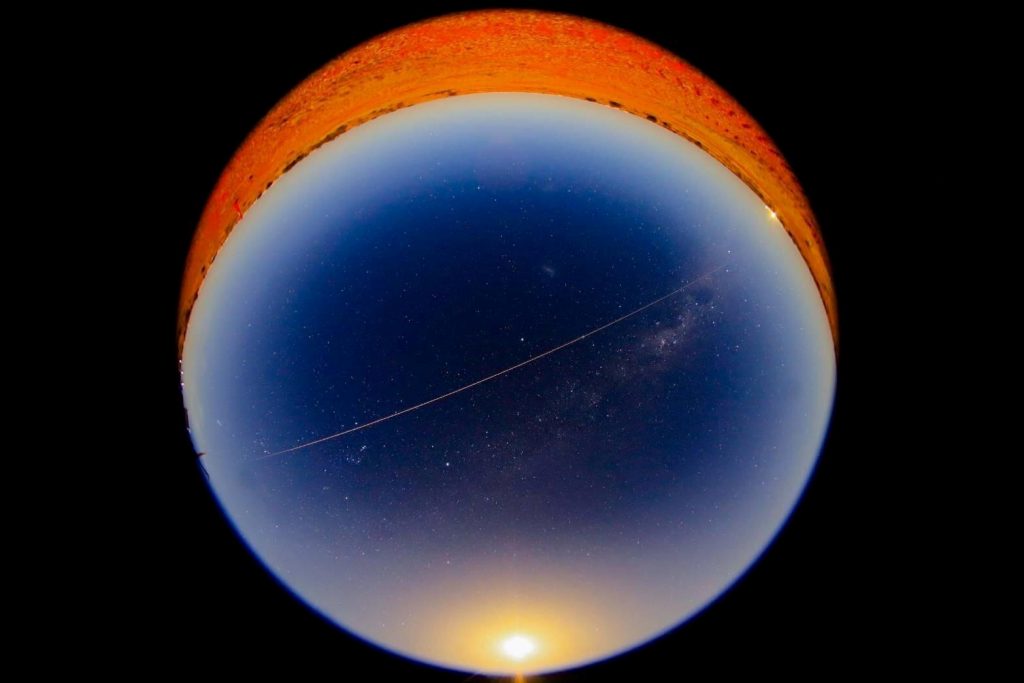
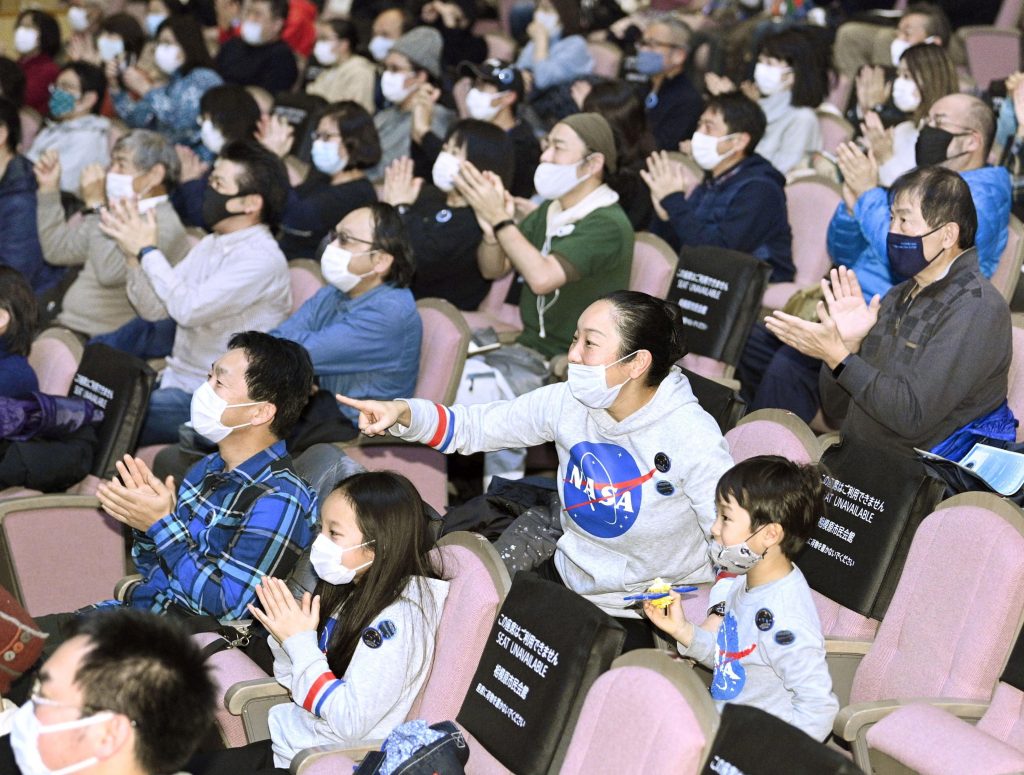
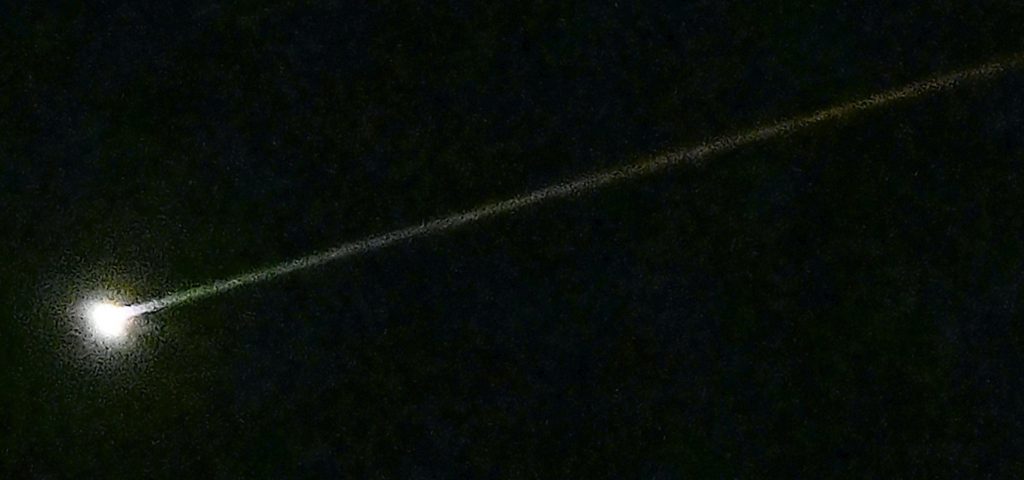
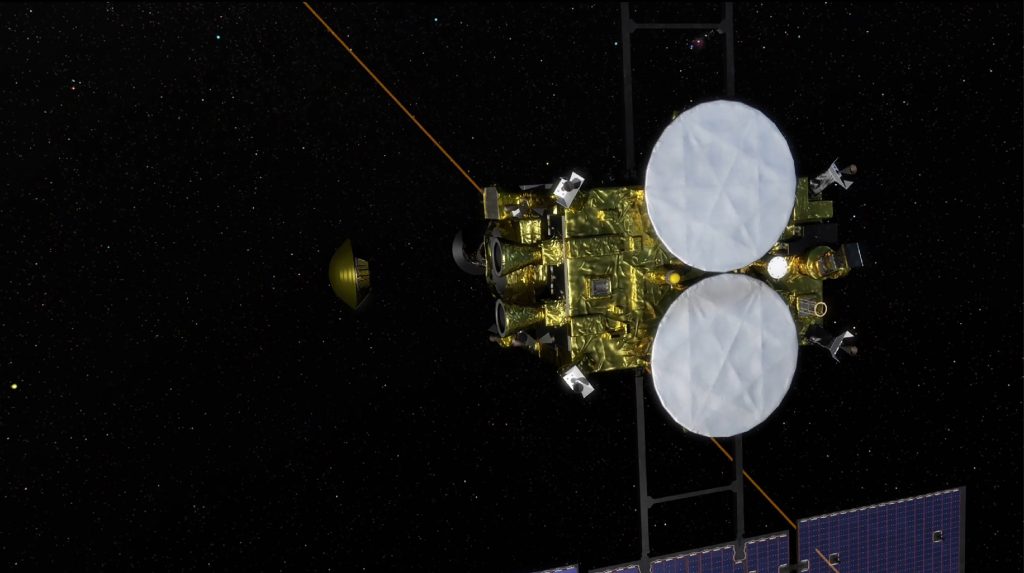
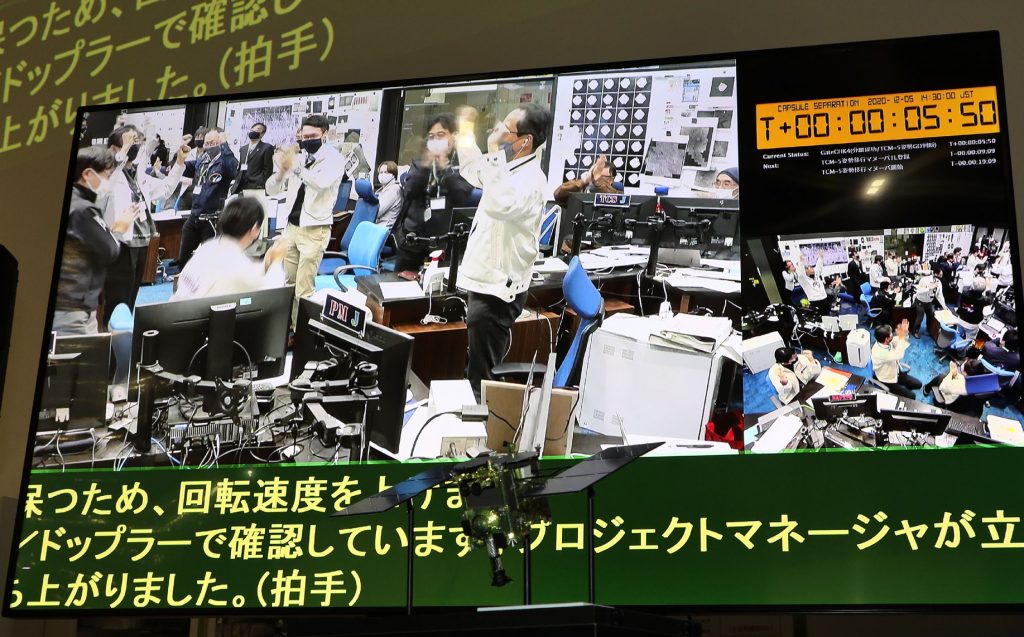





TOKYO: A capsule believed to contain sand samples from asteroid Ryugu arrived back on Earth on Sunday morning after being separated from Japan’s Hayabusa2 unmanned probe the previous day.
The capsule, about 40 centimeters in diameter, entered Earth’s atmosphere above Australia around 2:30 a.m. Japan time (5:30 p.m. Saturday GMT). The Japan Aerospace Exploration Agency, or JAXA, found the capsule in a desert near Woomera in southern Australia around 4:45 a.m. and retrieved it about three hours later.
If sand is collected from the capsule successfully, it would be the first such feat since the first Hayabusa spacecraft brought samples from the Itokawa asteroid to Earth in 2010. It would be the first time in the world for samples from a carbonaceous, or C-type, asteroid, which is believed to contain organic and hydrated minerals, being brought to Earth, possibly giving clues to unraveling the mystery of how the solar system was created and the origin of life.
JAXA staff members in the government-affiliated space agency’s control room in the city of Sagamihara, Kanagawa Prefecture, eastern Japan, expressed joy when the capsule entered Earth’s atmosphere, with everybody shouting “yes!”
“It was a beautiful entry into the atmosphere, and it was moving,” Yuichi Tsuda, the Hayabusa2 project manager, said. “It was really nice.”
Both the Hayabusa2 probe and the capsule returned to Earth “in a perfect state,” Tsuda said at a news conference held at JAXA’s Sagamihara campus later on Sunday. “We realized a technology enabling a spacecraft to travel to and from an asteroid freely,” he said, summing up the successful Hayabusa2 mission.
The capsule was separated from Hayabusa2 at 2:30 p.m. Saturday at a point some 220,000 kilometers from Earth. It entered Earth’s atmosphere at a speed of 12 kilometers a second.
At an altitude of about 10 kilometers, the capsule deployed a parachute to descend. A JAXA team went to retrieve the capsule by helicopter after estimating its landing site from beacon signals emitted from the capsule.
Following the capsule’s return to Earth, JAXA plans to collect volatile gas from the capsule in Australia on Monday. The agency will transport the capsule to the Sagamihara campus as early as Tuesday to examine the amount of the samples in it and conduct other initial analyses, including through a microscope.
Hayabusa2 fired its engine to escape Earth’s gravity on Saturday afternoon, heading for another asteroid, 1998KY26, for its next mission. The probe aims to reach its next target asteroid in 2031.
Hayabusa2 was launched in December 2014 and reached Ryugu in June 2018. It landed on Ryugu twice and created an artificial crater on the asteroid, which is located between Earth and Mars.
Discovered in 1999, Ryugu, about 900 meters in diameter, has a rotation period of 7.5 hours. On the surface of the asteroid are a number of rocks and the “Urashima crater,” which has a diameter of about 300 meters.
Sand on Ryugu is believed to be in the same state as it was when the solar system was formed about 4.6 billion years ago.
Hayabusa2 made its first landing on Ryugu in February 2019. It later created an artificial crater and touched down on the asteroid again, near the crater, to collect samples from the asteroid.
JAXA associate professor Masanao Abe, who will be responsible for the initial examinations, said, “We had difficulties picking particles in samples collected by the first Hayabusa from the Itokawa asteroid.”
“We expect that visible particles are in the capsule brought home by Hayabusa2,” Abe said, adding, “We may be able to obtain data that help us get to the bottom of the origin of life.”
JIJI Press